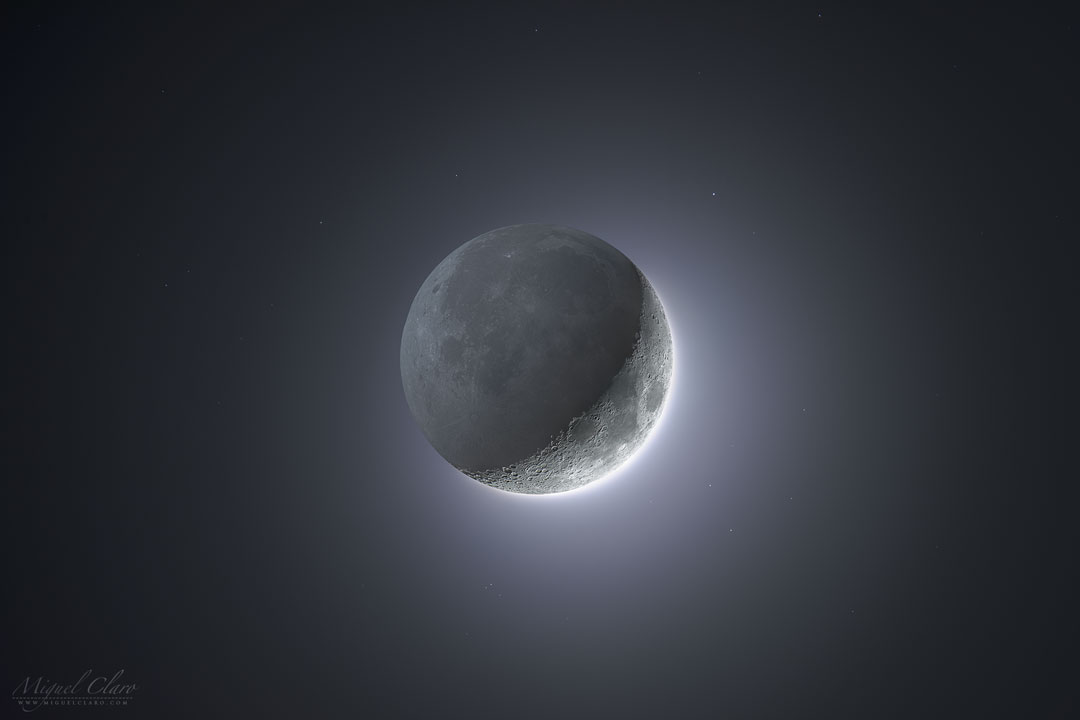2020年8月24日
Crescent Moon HDR
Image Credit & Copyright: Miguel Claro (TWAN, Dark Sky Alqueva)
Explanation: How come the crescent Moon doesn’t look like this? For one reason, because your eyes can’t simultaneously discern bright and dark regions like this. Called earthshine or the da Vinci glow, the unlit part of a crescent Moon is visible but usually hard to see because it is much dimmer than the sunlit arc. In our digital age, however, the differences in brightness can be artificially reduced. The featured image is actually a digital composite of 15 short exposures of the bright crescent, and 14 longer exposures of the dim remainder. The origin of the da Vinci glow, as explained by Leonardo da Vinci about 510 years ago, is sunlight reflected first by the Earth to the Moon, and then back from the Moon to the Earth.
Tomorrow’s picture: around a black hole
眉月的高动态范围影像
影像提供与版权: Miguel Claro (TWAN, Dark Sky Alqueva)
说明: 为何平常见到的蛾眉月和上图大不同呢?理由之一是:肉眼无法像这幅影像一样,能够同时分办亮区与暗区。眉月黝黑、受到地照光(达文西灰光)照耀的区域,因为远比日曜区昏暗,通常肉眼难以分办。不过在数位成像的年代,不同亮度区域的差异能够人为降低。上面这幅主题影像,实际上是由记录明亮蛾眉区的15张短曝光照片,以及其余暗区的14张较长曝光照片组合而成。达文西在510年前就提出解释,指出地照光的成因是:被地表反射的阳光,从月面反射所形成的辉光,故亦称为达文西灰光。
明日的图片: around a black hole




amazing